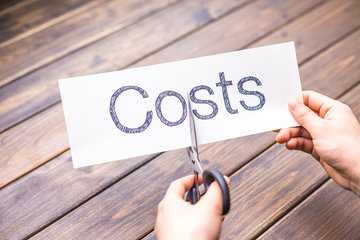A Guide to Travel Insurance
Content updated. Originally published April 2015.
Traveling is expensive. But when you take a trip without travel insurance, the bill can skyrocket. Unfortunately, incidents such as medical emergencies, accidents or theft all carry price tags big enough to put a dent in your finances.
Travel insurance helps, but not all policies are alike. To find the best coverage, you’ll have to do some research and some smart trip-planning. Here are our tips for finding travel coverage that fits your needs and destination!
Check your current policies first
If you pay for life, home, health or auto insurance, check out your policy/ies before you make a single reservation for your trip. You may even want to call your insurers to get specific details about what’s covered, including:
- Lodging: Hotels versus hostels or home shares like Airbnb or Vrbo.
- Activities: Sports or extreme activities like scuba diving, four-wheeling or kite surfing.
- Limits: Where your personal coverage ends and where buying travel coverage might be beneficial.
You might be surprised to see what you’re already paying for. For example, your homeowners insurance may include liability coverage on out-of-state or foreign trips if you accidentally injure someone. Additionally, some health insurance policies offer medical evacuation insurance. Further travel insurance coverage could also be available through your credit card company.
That doesn’t necessarily mean you should forego additional coverage just to save money on your vacation, but it’s worth considering what you already have available before you buy your travel insurance.
If you’re traveling on business, talk to your employer about additional insurance. Make sure someone from your benefits department briefs you on the company’s travel rules and coverage standards. Employers who do business in risky areas where crime, geopolitical conflict, or rough weather are common may have specific systems in place for these issues.
Consider trip-specific needs
Travel insurance includes different categories. The right plan for you should cover any or all of the following needs that pertain to your trip, wither in a comprehensive policy or through separate policies:
- Trip cancellation and/or trip interruption
- Loss of luggage
- Medical and/or dental
- Pre-existing medical conditions
- Evacuation (medical or otherwise)
Before honing in on a policy, consider how much risk you’ll be taking in each of these areas and choose your policy accordingly.
Compare costs
Before making an investment in travel insurance, compare pricing from a few different insurers.
How much should your policy cost? It is difficult to cite average premiums for trips because every trip and traveler is different. There are also a variety of factors that determine your price, including your age and destination.
However, you can generally expect travel insurance to add anywhere from 4% to 8% to your total trip costs. So for a $2,000 trip, for example, insurance could cost anywhere from $80 to $160.
Be cautious with certain insurers
Has your airline, cruise line or hotel company offered you insurance for your trip? Think twice before going with their coverage.
While their policies may indeed cover you, keep in mind that these travel providers are not full-time travel insurers, also known as third-party carriers. They may not be able to match the quality of coverage or customer service that an established travel insurance company can.
Know how to file a proper claim
Like most insurers, travel insurers may resist paying out claims, especially if you take extreme risks or fail to properly document an incident.
Travelers should pay attention to what is known as the exclusion clause in a travel insurance policy, so they can avoid uncovered behavior and make sure filing a claim is smooth.
What kind of claims are you most likely to have to file? For 2024, the most common claims included cancelled trips and medical emergencies. That certainly doesn’t mean anything negative will interrupt your trip, but it’s still a good idea to be prepared.
If you do have a claim, document it quickly and promptly. Here are some steps you can take both before and after an incident, to help ensure your claim is approved:
- Keep copies of receipts for valuables that could potentially be lost or stolen.
- Hold onto ticketing or paperwork for segments of your trip that can be cancelled.
- For damaged property, take photos that clearly show the damage.
- If you need medical care while abroad, ask the medical provider for paperwork documenting each of your expenses.
- If you’re the victim of a crime, obtain and file a copy of the police report at your destination and gather any other relevant documentation safely.
Look into local risks
Before liftoff, take some time to learn about the conditions in your destination. For example, check weather reports and make sure you take proper precautions against severe weather or impending disasters. The National Weather Service has websites for its Storm Prediction Center and National Hurricane Center that show up-to-the-minute weather patterns that may affect travel and destinations along the route.
You can also visit the U.S. State Department website to see if there are any travel advisories for issues such as local crime, terrorist attacks or geopolitical conflict.
Bottom line: The up-front cost of travel insurance can pay off!
Travel insurance can more than pay for itself when illness, personal emergencies, bad weather or local conflicts threaten your much-anticipated trip.
But before you buy insurance, get clear about what you need. Take some time to check into your current coverage. Then, be sure to honestly evaluate the risks you’re likely to face on an upcoming trip and whether the costs and coverage of travel insurance will meet them all.


